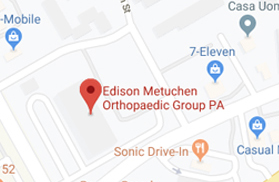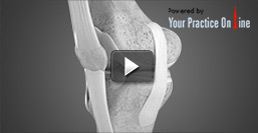Carpal Tunnel Release
The carpal tunnel is a narrow passageway on the palm side of your wrist. Small wrist bones known as carpals form the bottom and sides of your carpal tunnel and a strong band of connecting tissue, known as the transverse carpal ligament, covers the top of the carpal tunnel.
The carpel tunnel houses the flexor tendons, that allow you to bend your fingers, and the median nerve that provides sensation to most of your fingers and hand.
Special tissues known as synovium surround and lubricate the flexor tendons in your wrist, allowing smooth movement of the fingers. Carpal Tunnel Syndrome occurs when the synovium swells narrowing the limited space within the tunnel and pinches the median nerve over time. The transverse carpal ligament can also become tight narrowing the carpal tunnel space and putting pressure on the median nerve.
Signs & Symptoms
Some of the common symptoms associated with Carpal Tunnel Syndrome include:
- Numbness and tingling in the thumb, index, and middle fingers
- Pain and burning in the hand and wrist that may radiate up the arm to the elbow
- Decreased sensation and weakness in the hand with diminished grip strength
- Worsening of symptoms at night
Causes
The following factors have been known to increase a person’s risk of developing carpal tunnel syndrome:
- Repetitive Motion: performing heavy, repetitive hand and wrist movements with prolonged gripping at work or play
- Congenital: Some people are born with narrower carpal tunnel canals.
- Trauma: Injury to the wrist such as fractures or sprains.
- Hormonal Changes: Pregnancy, menopause, birth control pills or hormone pills are risk factors as they alter the levels of hormone in the body.
- Medical Conditions: Conditions such as hypothyroidism, rheumatoid arthritis, diabetes, obesity, gout, overactive pituitary gland, or the presence of a cyst or tumor extending to the carpal tunnel
Diagnosis
Your doctor diagnoses carpel tunnel syndrome by performing a detailed medical history and physical examination. Further tests may be ordered including an X-ray to view your wrist bones; blood tests to rule out underlying medical conditions such as diabetes, arthritis and thyroid problems, and electro diagnostic testing to assess the speed and degree of electrical activity in your nerves and muscles.
Treatment
Carpel tunnel syndrome can be treated with conservative measures or surgical intervention. Conservative treatment options may include treating any underlying medical conditions, such as diabetes and arthritis. Your hand and wrist may be immobilized with a splint or wrist brace for 4 to 6 weeks. Ice packs may be recommended to keep down any swelling. You may be advised to avoid activities that tend to bring on the symptoms. Medication and steroid injections may be used to treat pain and swelling. You may be referred to therapy to be taught strengthening and stretching exercises.
When conservative treatment options are not effective, surgery may be recommended.
Surgical Procedure
In a mini-open procedure, a small incision is made in the wrist overlying the roof of the carpal tunnel. The canal is opened by releasing the transverse carpal ligament. This releases the pressure on the median nerve and helps to alleviate the symptoms of carpal tunnel syndrome.
The small incision is closed with stitches. The ligament will heal (reconstitute) with a resultant larger canal space. The stitches are removed within 10-14 days and the incision will remodel over the following weeks.
Post-operative care
Patient having carpal tunnel release surgery can be discharged home the same day.
Your surgeon will suggest certain post-operative procedures for a better recovery and to avoid complications.
- Elevate the hand above heart level to reduce swelling
- A splint may be worn
- Ice packs to the surgical area to reduce swelling
- Keep the surgical incision clean and dry; cover the area with plastic wrap when bathing or showering
- Physical therapy may be ordered to restore wrist strength
- Eating a healthy diet and not smoking will promote healing
The majority of patients do not suffer any complications following carpal tunnel release surgery but as with any surgery, complications can occur and can include continued pain, infections, scarring, and nerve damage causing weakness, paralysis, or loss of sensation and stiffness in the hand and wrist area.
 Menu
Menu






